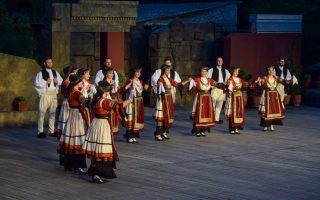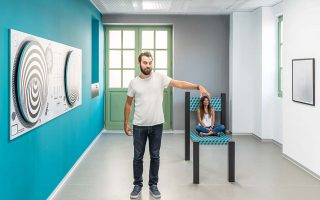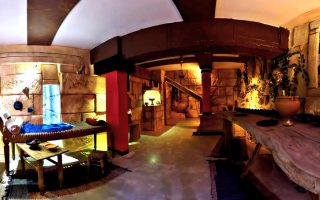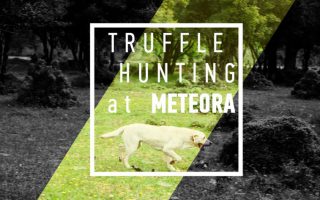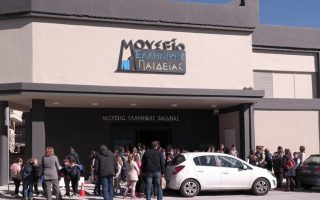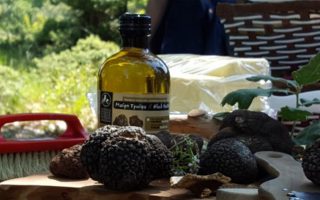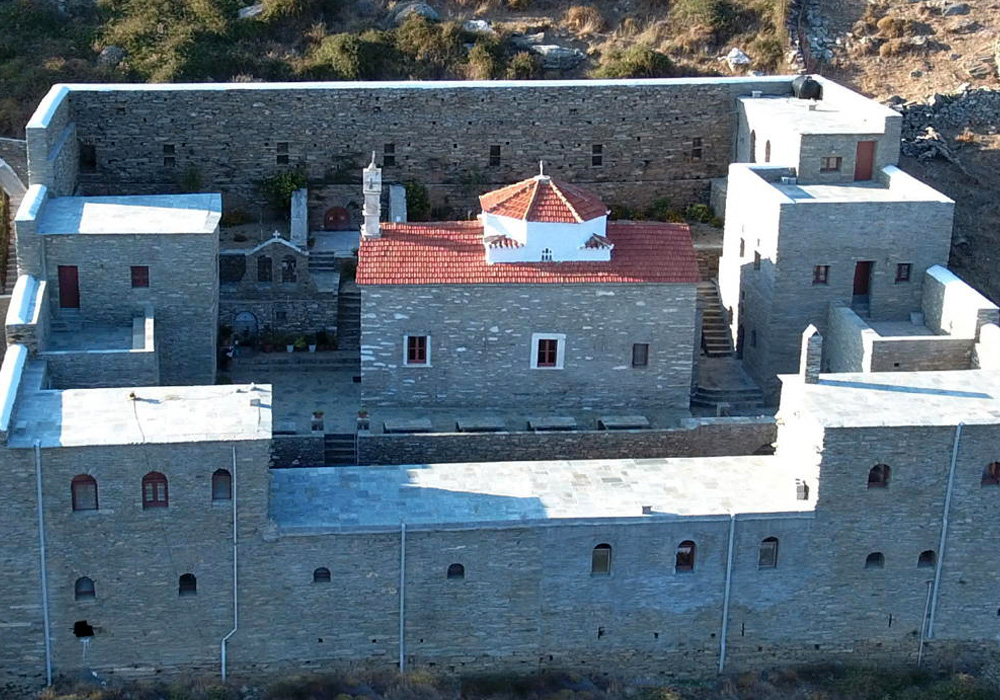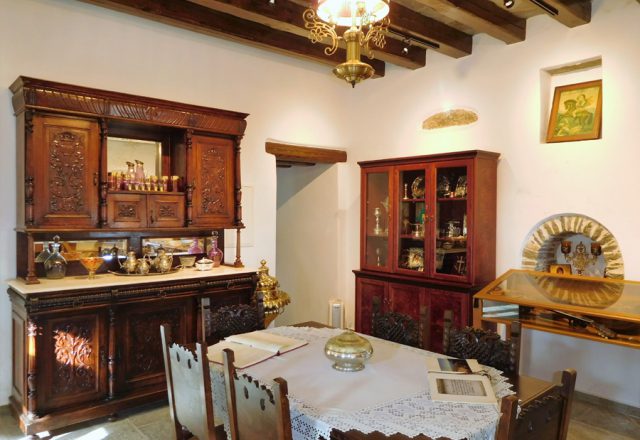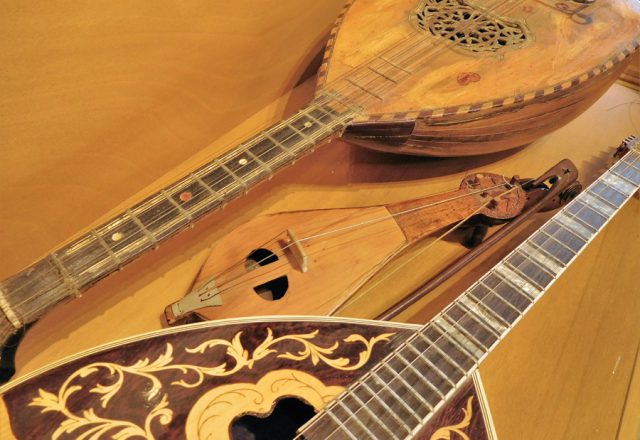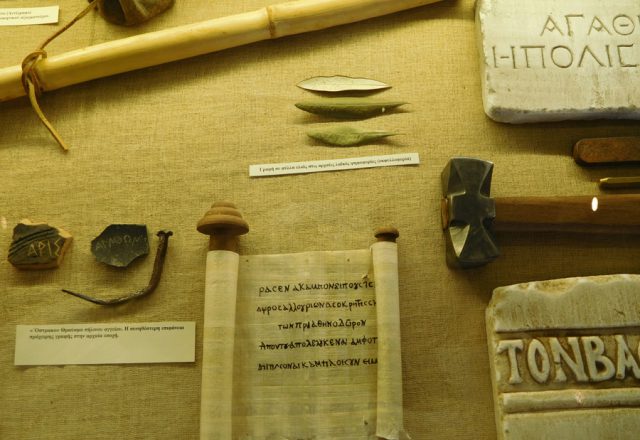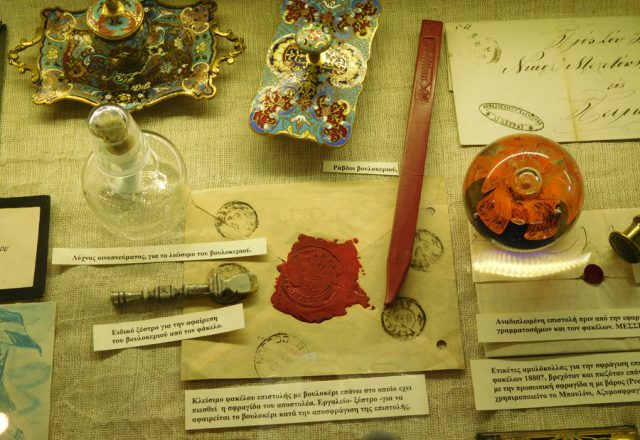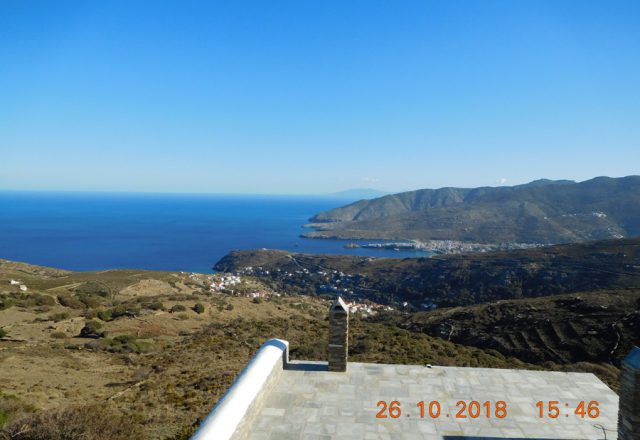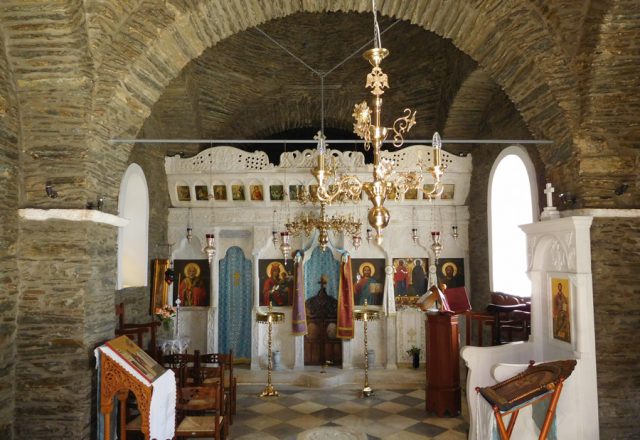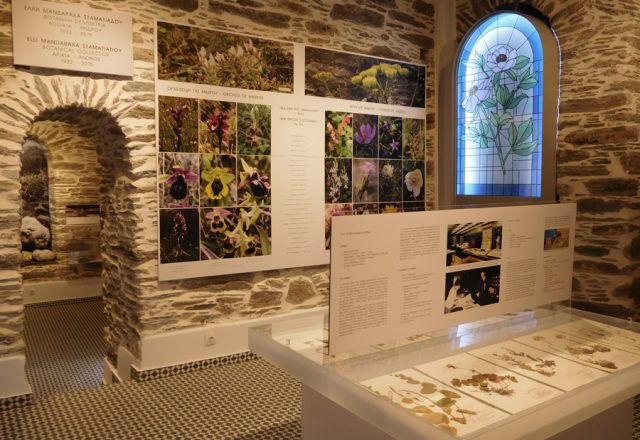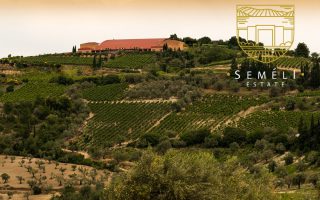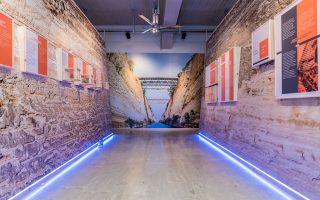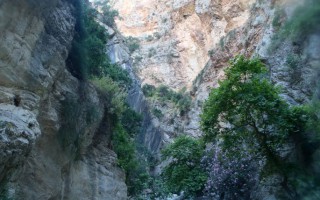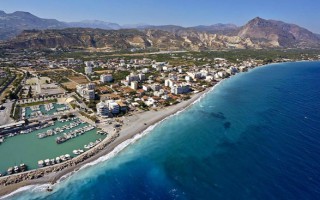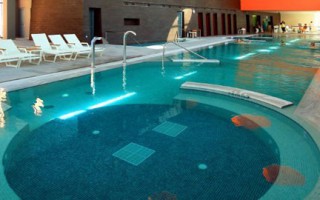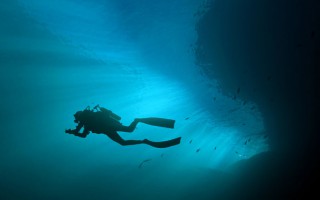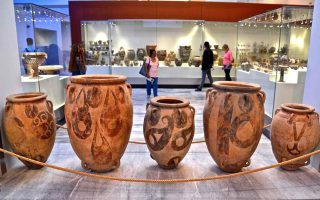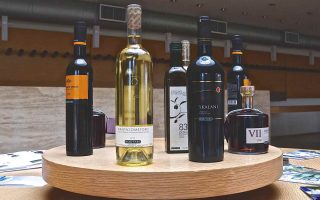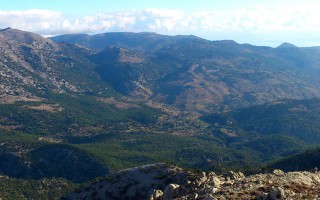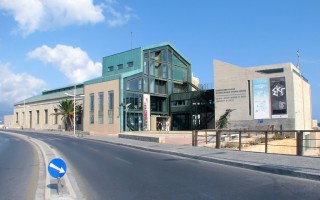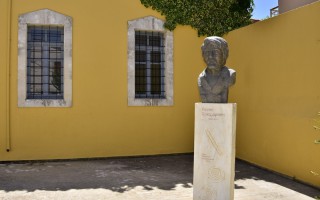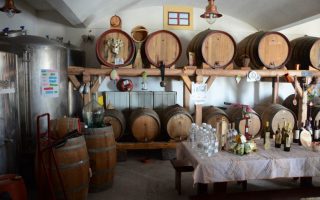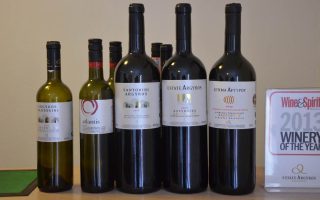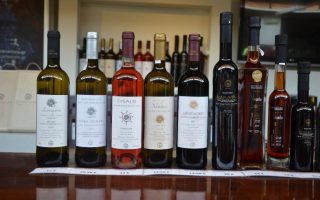If a picture is worth a thousand words, be sure that an illusion hides more than a million
 Enter the fascinating world of illusions which will trick your confidence in senses, but amaze you by doing it; the world that will confuse you completely, but also educate you… Visit us and you will be thrilled because nothing is what it seems, especially not HERE!
Enter the fascinating world of illusions which will trick your confidence in senses, but amaze you by doing it; the world that will confuse you completely, but also educate you… Visit us and you will be thrilled because nothing is what it seems, especially not HERE!
Are you ready for an even bigger, better, more fascinating adventure? Visit the Museum of Illusions in Athens; we offer you an intriguing visual, sensory and educational experience with a handful of new, unexplored illusions.
Athens, the main place of illusions!
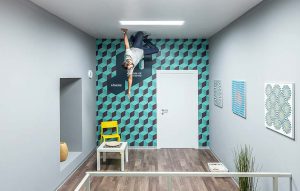 The Museum of Illusions in Athens brings you a space suitable both for social and entertaining tours into the world of illusions which has delighted all generations. It’s a perfect place for new experiences and fun with friends and family. Not only is it a place for children who adore coming, but also a place for parents, couples, grandmothers and grandfathers.
The Museum of Illusions in Athens brings you a space suitable both for social and entertaining tours into the world of illusions which has delighted all generations. It’s a perfect place for new experiences and fun with friends and family. Not only is it a place for children who adore coming, but also a place for parents, couples, grandmothers and grandfathers.
See what else we offer, you won’t believe your eyes!
 Be brave enough to jump in an illusion created by the Vortex Tunnel that will drive you crazy and make you believe you’re heavily struggling just to make a step forward through a rotating cylinder – on a surface so stable and flat! Be unbelievably rotated in the Upside Down Room, let yourself free in an Infinity room, resist the laws of gravity and size ratio, and make pictures of yourself in EVERY POSSIBLE POSE!
Be brave enough to jump in an illusion created by the Vortex Tunnel that will drive you crazy and make you believe you’re heavily struggling just to make a step forward through a rotating cylinder – on a surface so stable and flat! Be unbelievably rotated in the Upside Down Room, let yourself free in an Infinity room, resist the laws of gravity and size ratio, and make pictures of yourself in EVERY POSSIBLE POSE!
Deceive your eyes and entertain the mind!
Enjoy in our collection of holograms, look closer at every optical illusion and observe thoroughly each installation. They are such a brilliant, playful reminder that our assumptions about the world we perceive are often, nothing but a spectre of illusions.
The genuine heritage of showpieces will more certainly make your jaw drop!
Amusing and awesome tricks will teach you about vision, perception, the human brain and science so it will be easier to perceive why your eyes see things which your brain cannot understand. Make sure you visit our playroom with intriguing and educational games and puzzles. These brain bashers are definitely great fun but tend to be frustrating as well.
Come and explore the world of illusions. Experience the impossible. Be sure your camera is fully charged with memory space before you visit. By all means take your camera with you 😉
 The Hellenic Culture Museum is located in the city center of Kalambaka and houses the private collection of Mr Pavlos Balogiannis in a space of 1000 sq.meters dedicated to the history of Greek education and learning, aspiring to serve its educational and cultural orientation.
The Hellenic Culture Museum is located in the city center of Kalambaka and houses the private collection of Mr Pavlos Balogiannis in a space of 1000 sq.meters dedicated to the history of Greek education and learning, aspiring to serve its educational and cultural orientation.
The museum aims at the preservation,study, promotion and encancement of Greek Education and its values and hopes to establish a strong collection between the visitor and the greek letters and culture in a simple, experidential way and become a cultural center that provides education, learning and science.
The presentation of the collection is perfectly centered to the needs of the modern visitor.
Source: www.bookmuseum.gr
The monastery of Saint Irene was founded in 1780 at Archontas in the village of Apoikia by the Spiridou brothers, both of whom were monks.
At that time it was a nunnery, but in 1833 it was abandoned, due to King Otto’s Royal Degree which demanded the dissolution of the orthodox monasteries, which numbered about 1000 in Greece, with a smalls number of monks or nuns and the confiscation of their properties. Gradually, the buildings around the church collapsed, although the church remained in good condition.
In 2006, Captain Eleftherios Polemis bought the field which included the ruins of the monastery. He and his family renovated the buildings around the church and did maintenance work inside the church, remaining true to the previous architectural form. The renovation took 10 years to be carried out.
Nowadays, the monastery plays a big role in the community. It holds summer camps for children, many of whom are orphans. Furthermore, throughout the whole year it houses the following exhibitions:
- History of writing (Kairis Collection)
- Traditional musical instruments
- Collection of stones, minerals & fossils (Spiros Mpellas collection)
- Elli Mandaraka – Stamatiadou & Flora of Andros
The church (dome basilica) is well worth viewing: it is made from slate with arches, the dome is based on trianglur spheres and the walls are built of traditional stone. Especially notable are the floor with an eagle and the marble ‘iconostasis’ with its flower decoration, dating from 1806.
The museums should be visited and there is a wonderful view of the city of Andros and the coastline with the sea from the Monastery.
The Monastery is open every day from 10:00 – 17:00, including Sundays and celebration days.
Telephone number: 6982038281
For more information, you can find us www.imagiasirinisandrou.gr
E-Mail: imagiaseirinisandrou@gmail.com
Got from: Holy Monastery of Saint Irene
διαβάστε περισσότεραThe Centre of History and Science “GRAMMI.org” is a new initiative that aims at turning, through its activities, the visit to Corinth to an unforgettable experience.
The Centre’s aim is to offer opportunities to visitors to experience, in an innovative, exciting, and interactive way, the importance of Corinth’s history and the scientific and technological achievements connected with it.
With the lead of history the scientific achievements are unfolded as they were developed in Corinthia.
The 6km Project
From the ancient diolkos … to the Corinth Canal
Ηistory & Science Route
Αuthentic Experiences connecting ancient diolkos to Corinth Canal
Ancient diolkos
Hexamilion Wall
Construction of the Corinth Canal
- The program concerns groups of 10-50 people and is offered in both Greek and
English, as well as other languages with the help of specialized translators. - Τhe timing of the program can be tailored to the time available for each group (45’÷90΄)
Discovering the “GRAMMI.org”
Through a timeline and an exciting journey to the past with the use of rich and scientifically valid material:
• photos
• texts
• video animation
the centre brings the visitor in contact with the ancient diolkos, the Hexamilion Wall, and the attempts of digging a canal through the isthmus, as well as with the sciences involved (mechanics, geology, physics, mathematics, philosophy).
Science & Technology
are used in an exciting way to connect the theoretical knowledge with the technical characteristics of one of the most important constructions worldwide.
3D experience …
Virtual flying through the Corinthian and the Saronic Gulfs, the ancient port of Lechaion, and the archaeological site at Isthmia.
Sandbox application …
Real time water flow simulation for the construction of Corinth Canal.
Physics experiments …
Moreover, through easy, pleasant, though enlightening, Physics experiments, visitors will be able to realise the extraordinary importance of the ancient diolkos – this pioneering technological achievement of the ancient Corinthians – for commercial and military purposes.
Visiting the permanent exhibition ‘Shipbuilding in ancient Greece’
Visitors will be able to see the wooden models of Greek ships from antiquity to modern times, some of which are closely connected with Corinth:
• the trireme
• the Athenian bireme
• Samaina
• the Byzantine dromon
are some of these models of this unique collection, handmade with every possible detail, copies of the original ships that get the visitors to a fascinating journey to Greek naval history.
Workshop of the ancient Corinthian doll (plagona)
Ancient Greeks possessed a great tradition of creating small terracotta figurines either for religious purposes or as toys.
The workshop is carried with the guidance of the director of theatrical and puppetry activities of our Centre.
The participants are either adults or children or entire families.
Source: www.grammi.org
The Museum of Ancient Greek Technology Kostas Kotsanas, presents a new permanent exhibition space, open from Monday, 8 January 2018, in the heart of Athens, within a small distance from the Hellenic Parliament.
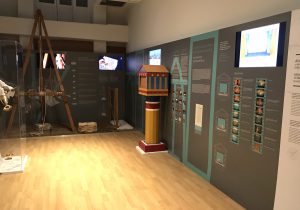 In a unique historic Art Nouveau building, Pindarou 6 and Acadimias St. in Kolonaki (which once belonged to the family of Queen Aspasia Manou, wife of Alexander I), with a total area of 700 square meters, guests will have the unique opportunity to get to know a relatively unknown aspect of Ancient Greek culture through the exhibition “Hi-Tech Inventions of Ancient Greeks “, which includes approximately 100 selected exhibits, from the robot-servant and the “cinema” of Philon to the automatic theater of Heron, and from the Hydraulic Clock of Ktesibios to the Antikythera Mechanism.
In a unique historic Art Nouveau building, Pindarou 6 and Acadimias St. in Kolonaki (which once belonged to the family of Queen Aspasia Manou, wife of Alexander I), with a total area of 700 square meters, guests will have the unique opportunity to get to know a relatively unknown aspect of Ancient Greek culture through the exhibition “Hi-Tech Inventions of Ancient Greeks “, which includes approximately 100 selected exhibits, from the robot-servant and the “cinema” of Philon to the automatic theater of Heron, and from the Hydraulic Clock of Ktesibios to the Antikythera Mechanism.
At the same time, the same building will permanently house the independent exhibition of Ancient Greek Musical Instruments with 42 fully functional, reassembled musical instruments, such as the helicon and the sixth string of Pythagoras, the lyre of Hermes, the guitar of Apollo, the Homeric phorminx, the harp of Sappho, the Ptolemaic helicon, the Pan flute, the hydraulis of Ktesibios, and others.
Additionally, the new Kotsanas Museum will present a specific space for periodical exhibitions, each time dedicated to different aspects of the admirable technology of the Ancient Greeks, such as the Archimedes exhibition or Ancient Greek games, Ancient Greek automations, Ancient Greek shipbuilding, Ancient Greek siege engines, Ancient Greek astronomy and many others.
At the same time, the museum premises will provide, at varying levels, educational programs and workshops, within the framework of the museum philosophy, such as workshops in the fields of robotics, arts, natural sciences, mathematics, and others.
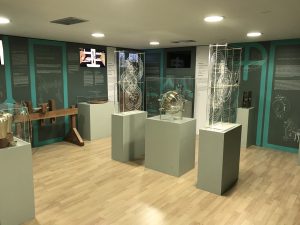 Guests will also be able to purchase from the Museum Shop, handmade models, copies of the exhibits of the museum made by Marios Kotsanas, such as an exact replica of the Antikythera Mechanism, the portable “clock” notebook of Parmenion, the fourth quadrant of the Hipparchus, ancient Greek ships, toys, musical instruments, and other items.
Guests will also be able to purchase from the Museum Shop, handmade models, copies of the exhibits of the museum made by Marios Kotsanas, such as an exact replica of the Antikythera Mechanism, the portable “clock” notebook of Parmenion, the fourth quadrant of the Hipparchus, ancient Greek ships, toys, musical instruments, and other items.
Museum Kotsanas is a non-profit organization and all revenues are made available to museum and education activities.
LOCATION: Pindarou 6 & Akadimias St., Kolonaki, Athens
DAYS / HOURS: Weekdays & Weekends 09:00-17:00
GENERAL ADMISSION: € 5, including tour-demonstration of selected exhibits.
(Guided tours take place every hour from 9:00 to 16:00.)
REDUCED TICKET: * 3.5 € for youths aged 12-18, students, teachers, multi-child families, pensioners, unemployed
* Proof of ID required
FREE ENTRY: * School monitors & organized groups, children up to 11 years old
(accompanied by adults), ICOM members, people with special needs, military personnel, tour guides, journalists
* Proof of ID required
INFORMATION
Weekdays & Saturday 09:00-13:00
T. +30 211 411 00 44, +30 6907-292002
E: info@kotsanas.com
Educational Tours: Schedule your visit in time!
The new Museum of Ancient Greek Technology Kostas Kotsanas offers experiential guided tours by qualified staff starting from Monday, 8 January 2018.
Telephone reservations are mandatory.
Learn about the Terms of Participation
DAYS / HOURS: Monday-Friday 09:00-13:00 *
* For organized visits on other days/hours, please contact us.
PARTICIPATION: Up to 25 people per group. Option of simultaneous tour of up to 6 groups.
DURATION: 60’ or 120′ depending on the availability of the teams.
COST: € 5 per person. Special discounts on vulnerable social groups and groups of 25 people or more. Entrance is free for school monitors-teachers.
INFORMATION-RESERVATIONS
Monday-Friday 9:00-13:00
T. +030 211 411 00 44, +30 6907-292002
E: info@kotsanas.com
The Heraklion Archaeological Museum in Crete is one of the biggest and most noteworthy museums in Greece and among the most significant museums in Europe. The museum houses representative artifacts from all the periods of Cretan prehistory and history, covering a chronological span of over 5,500 years from the Neolithic to the Roman Period. Its Minoan antiquities collection on exhibit is the most significant collection worldwide. The museum is justly considered as the museum of Minoan civilization par excellence.
The museum is located in the center of Heraklion. Built between 1937 and 1940 and designed by Greek architect Patroklos Karantinos, the museum is a significant example of Greece’s modernist architectural and has received a Bauhaus award.
The colours and the materials used in its construction, such as the veined polychrome marbles, recall certain Minoan wall-paintings which imitate marble revetment.
Source: www.greekgastronomyguide.gr
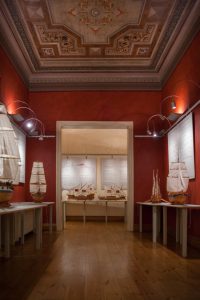 VOYAGE-Greek Shipbuilding and Seafaring
VOYAGE-Greek Shipbuilding and Seafaring
from antiquity to modern times
The exhibition VOYAGE-Greek Shipbuilding and Seafaring from antiquity to modern times is being extended through August 27th, 2017 (Opening hours: Daily and weekends 10:00-18:00, Thursday 10:00-20:00, Ap. Pavlou 37, Thissio-Athens, +30-211.0126486, museum@herakleidon-art.gr).
“Voyage” presents the history of Greek seafaring in the Aegean and the Mediterranean from prehistoric times to the middle of the 20th century. A history of maritime voyages, achievements in naval architecture, exchange of ideas and technological developments, through about 40 handmade wooden models of Greek ships of excellent, detailed construction with authentic materials, based on naval architectural drawings, following traditional methods. The creator of these models is Dimitris Maras, M.Sc. in Mechanical Engineering and model shipbuilder, who has studied in depth the shipbuilding history of Greece, as well as the construction of ship models.
The painter-printmaker Mary Schina, associate professor of the Printmaking department of the Athens School of Fine Arts, is participating in this exhibition with selected works from her series “Aegaeis”, “Aegean Sea Odes” and “Aegean Odes honour the Ancient Treasures of Antikythera”, inspired by the Aegean Sea. Νautical instruments, maps, video projections, explanatory drawings and other material, such as a special edition catalogue in two languages (English/Greek), further complement the exhibition, aiming to help the visitors understand the subject and goal of the exhibition by creating the appropriate museum environment.
A new section focusing on the century of research during which scientists have tried to understand the Antikythera Mechanism enriches the exhibition VOYAGE-Greek Shipbuilding and Seafaring from antiquity to modern times. Through rare exhibits that are being shown for the first time, early and contemporary models of the mechanism, explanatory texts, drawings and photographs, the Museum Herakleidon is presenting to the general public pivotal moments in the study of the most complicated mechanism of antiquity (2nd-1st cent. BC), aiming to showcase the advanced scientific knowledge of the ancient Greeks, their mathematical and technological achievements and, most importantly, their innovative spirit.
The goal of the exhibition is to present to the visitors, in a coherent and comprehensible manner, the history of Greek seafaring and shipbuilding, giving them a chance to take a mental trip back in time to discover the close and timeless relationship of the Greek people with the sea.
Schedule of guided tours
(It is imperative to make a telephone reservation in advance for all guided tours)
General guided tours
- a) For the general public: Sunday 12:00
- b) For organized groups: Thursday 18:00, Saturday 10:00
Number of participants per tour: 20 ● Duration: 50′ ● Price (including admission): 6 € per person
General tours for school groups
Days & times: Monday-Friday, 9:30, 10:30 & 11:30
Duration: 50′ ● Number of participants per tour: 25 (two separate groups can be guided simultaneously) ● Price (including admission): 4 € per student-chaperones/teachers free
«The Antikythera Mechanism» guided tours
Days and times: As above ● Duration: 60′ ● Price (including admission): 6 € per person
Information/Reservations: Tel: 211 01 26 486 / E-mail: museum@herakleidon-art.gr
Models creator: Dimitris Maras, M.Sc. in Mechanical Engineering & model shipbuilder
Works of art: Mary Schina, associate professor of the Printmaking department of the Athens School of Fine Arts
Exhibition Designer & Curator: Nikoleta Xydea, Archaeology-Museology MA
We thank the Maritime Museum of Litochoro for the loan of five navigational instruments from its collections, the Hellenic Navy and the Research Institute of Ancient Shipbuilding and Technology “NAFDOMOS” for the loan of audio-visual materials, and the National Archaeological Museum, the Numismatic and Epigraphiical Museum, the Archaeological Museum of Piraeus, the Museum of Prehistoric Thera, the Archaeological Museum of Atalanti and the Aegean Maritime Museum for granting permission to use photos of selected objects from their collections.
We also thank Anna Lontou, holder of the copyright on the works of G. Seferis, for her kind permission to use a verse from “Mythistorema”.
Website: www.herakleidon-art.gr
The Museum of Prehistoric Thera at Fira, Santorini, is one of the most important in Greece. It hosts findings from the excavations at Akrotiri, both the older ones conducted by the German Archaeological Institute and the more recent ones by the 21st Emphorate of Antiquities. The late professor Spyridon Marinatos, one the leading archaeologists excavating Akrotiri, had the inspiration to built the museum.
The Museum of Prehistoric Thera first opened in the late 20th century and can be considered an extension of the Akrotiri archaeological site, since it hosts the frescoes and movable finds from that urban centre at its peak in the 17th century BC.
Μore at Greek Gastronomy Guide…
Source: Greek Gastronomy Guide
In 2014 the old D. Nomikos tomato canning factory in Vlychada, Santorini was transformed into a modern Tomato Industrial Museum, which also operates as the Santorini Arts Factory, an arts and cultural events venue.
The Tomato Industrial Museum offers visitors a trip down memory lane and the old ways of cultivating, processing and producing tomatoes.
The Museum’s exhibits include processing machines from 1890, old hand-written factory logs, old tools, the first labels, as well as audiovisual testimony recorded from factory workers.
Μore at Greek Gastronomy Guide…
Source: Greek Gastronomy Guide
If one wants to learn about the history of wine on Santorini, the best way to do is to visit the Koutsoyannopoulos Wine Museum.
The museum presents the history of wine and the life of the Santorinian vintner from 1660 to 1970 in an old and labyrinthine winery, eight metres below the surface and 300 metres long. Visitors are shown the history of wine through the use of mobile and still reproductions, while automatic electronic audio guides explain it all in fourteen languages.
Great care and attention has been taken to show and tell all the stages of wine production along the route in specially decorated kanaves (old storage rooms). Pruning the vines, ploughing the soil, harvesting the grapes, weighing and pressing the harvest, cleaning the vats, crafting the barrels, distilling the raki, loading the boats for export are all shown, interspersed with old tools, containers and rare machinery.
Μore at Greek Gastronomy Guide…
Source: Greek Gastronomy Guide



